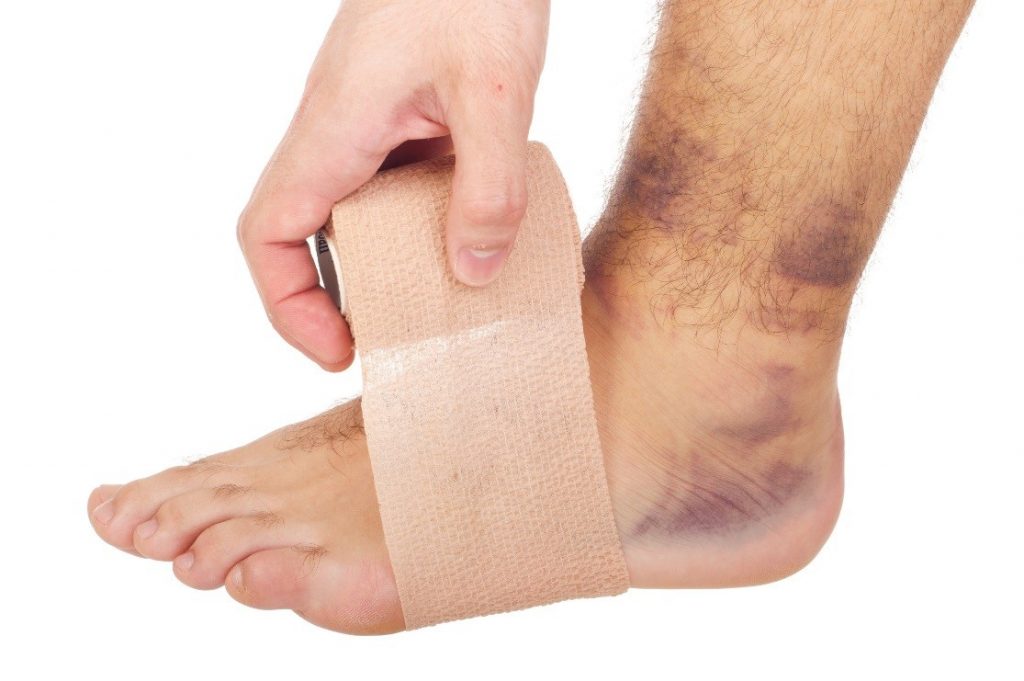In case some people don’t know, Zumba is a type of fitness program that was introduced by a choreographer called Perez in 1990, and became famous with the release of a series of fitness videos incorporating it. It is the act of exercise with the help of dancing and includes all the required movements, like squats and lunges. It involves dance movement on very energetic songs like songs of the hip-hop, samba, salsa, mambo, meringue and soca genres.
So, in an activity like this, injuries are bound to happen. Zumba classes can be availed without any registration and licensing fees, and considering that 15 million people take classes in 200,000 locations of more than 180 countries, the places are pretty crowded, and have a great amount of room for injuries. So today, we’ll be looking at the most common injuries that happen to people during or after Zumba classes, so if you are a participant, then read this article thoroughly and act on the prevention methods to steer clear of all the injuries. Let’s start!
- Muscle Strains

This is probably the most common thing that can happen to your whole body during Zumba sessions, due to the large and sudden movement of all the joints and muscles of your body. What is a muscle strain? You can say that it is a type of injury that is sustained due to the wear and tear of a muscle because of over stretching. It is quite painful and will bind you to your bed for a month or so. If you just got a strain, here’s how you can treat it and prevent it:
- The best and most effective treatment for muscle strains is known as the P. R. I. C. E. technique. It stands for Protection, Rest, Ice, Compression, and Elevation. In a nutshell, it means that you should pad or bandage the affected area, Rest until it is healed, Ice the area to avoid pain and swelling, Compress the area by using a thick cloth so that nothing can touch it and keep the feet high to avoid any impact with objects. It is very easy to do and speeds up the healing process by 63%!
- Next is the prevention. You should start slow, and then slowly build up momentum to avoid any sudden movement of the muscles. Before applying for a Zumba class, check the instructor and observe the session beforehand to see if your body can handle that amount of stress.
- Sprained Ankles

It is a common injury like a muscle strain but is particularly limited to the ankles of the feet. What are sprained ankles? As the name suggests, a sprained ankle is an injury which is sustained due to the sprain or stretching of one or multiple ligaments of the ankle. The pain is agonizing, and if not treated and rehabilitated correctly, can result in a permanently unbalanced and rolled ankle. Here’s how you can avoid this injury:
- The treatment for a sprained ankle is the same as a muscle strain and is called the P. R. I. C. E. technique. You can check it above in the first bullet point of the muscle strain heading. There is also a choice of whether you want to wear orthotics, but you should consult your doctor to see if you are eligible or you have regained enough foot movement ability to wear them or not
- The most common cause of sprained ankles during Zumba classes is the inappropriate choice of footwear. Since the music and exercises are energetic, side stepping and twisting the feet are done many times, and common and athletic shoes like running shoes don’t cut it.
- So, if you want to know which shoes are the best for sprained ankles, many doctors and podiatrists recommend patients to wear basketball shoes because of their flexibility and ease of fitting, and because Zumba is very similar to basketball, as both of them share a lot of movements, like quick stopping, turning, etc.
- Bone Fractures

This is the most painful of the bunch because your bone gets partially or completely cracked because of a high impact object or stress. Bone Fractures (or if you want to write it in a cooler and fancier way, FRX or FX) is an injury sustained by a trauma on the bone of the affected area, which can be anything from an object to a strike on the bone. Both of them result in either a break in the periosteum, the bursting of nearby tissues, or muscle spasms. Overall, all of them have the same pain factor, so here’s how one can avoid and treat such a thing during Zumba classes:
- The only treatment for a bone fracture is surgery. You cannot do anything to magically rejoin the broken parts of the bone, so schedule an appointment with the surgeon or doctor as soon as the fracture happens, as delays can worsen the condition of the bone and cause it to become more broken.
- The main cause of many bone fractures during Zumba classes is over crowdedness. Many bone fractures happen because of a high-impact collision with the neighboring dancer in the class, because of the energy filled movements and constant eyes on the trainer rather than the surroundings.
- You can avoid it by doing the complete opposite. Keep a keen eye on your sides, and don’t just completely focus on the trainer, he/she won’t kill you if you dance incorrectly! The best way is to skip the class if it is too over crowded. Better safe than sorry!
- Knee Pain

Knee pain is categorized in the less degree of painful injuries when in competition with big ones like fractures and strains. As the name suggests, it is a pain that is felt in the knee cap of the feet. Also called Patellofemoral Pain Syndrome (PFPS) or runner’s knee, it is mostly caused by high-stress activities like mountain climbing, sports and well, Zumba classes. Here’s how you can treat and avoid it:
- The general treatment for this injury as well, if not severe, is the P. R. I. C. E technique. You can read it above under the Muscle Strain heading. However, if the pain is greater, partial knee replacement is done. It involves replacing the damaged portions of the knee with metal or plastic braces. If even more severe, complete replacement is recommended through surgery.
- The general preventions for knee pain include the use of knee extensions and gluteal muscle strengthening exercises like squats, which you will perform during dancing in Zumba classes. If possible, tape the knee and stretch beforehand to avoid sudden stress on the knee.
Conclusion
Although there are many more injuries that can occur during Zumba classes, I’ll keep it short so that you won’t get scared. They may seem like all of them can happen easily, but if you follow the above precautions and preventions, and treat them correctly if they happen, you’ll find yourself enjoying the classes instead of worrying about them. If the information was helpful, be sure to pass this to other people in the class so that they can prevent the issues as well. Happy dancing!

